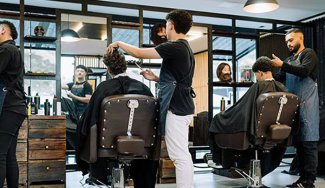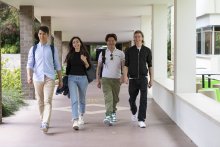

Why choose this course?
Our barbering course is perfect for students who want to learn and improve their skills in the barbering industry. This course will help you understand all aspects of barbering, including sales, consultation, and technical skills.
This qualification will open doors for you to work as a barber in different hairdressing environments, such as barber shops and salons. Whether you want to work in a small boutique salon or a larger chain, this course will give you the skills and knowledge you need to succeed.
You will learn how to talk to clients and understand what they need. You will also get hands-on experience with various barbering techniques, like clipper cutting and beard shaping. Additionally, you will learn to follow industry standards and procedures to provide high-quality service.
You will receive practical training in our on-campus hair salon, where you will work with real customers in a supportive environment. Our experienced lecturers stay up-to-date with the latest hairdressing and barbering practices, so you will learn from the best.
Career opportunities
- Barber
- Hairdresser
When choosing a course, it's important to think about the key skills and knowledge you'll need, as well as how you'll be assessed. Take a look at this information and consider if you might face any challenges in meeting the course expectations and requirements.
- Excellent attitude, enthusiastic, motivated and patient
- Good health with no skin allergies
- Good hand-eye coordination and attention to detail
- Able to consult with clients and listen to their needs
- Want to work in the personal services industry
-
An IELTS score (academic) of 6.0 with no band score less than 5.0 or equivalent.
-
Completion of the equivalent of Australian Year 10.
There may be further semester intakes available for enrolment. You can view any further intakes when you submit your online application(opens in a new tab).
For information about pathways from TAFE to university, view our Pathways to university page.
How to apply
Apply to study at TAFE in six steps:
- find a course;
- check entry requirements;
- submit an application;
- accept your offer and pay;
- apply for your student visa; and
- receive your visa and come to Australia for your studies.
Build your own course guide
Select the study areas, courses and topics you like. Get your custom guide by email!
Download study area guide(opens in a new tab)
Contact us(opens in a new tab)
TAFE International Western Australia (TIWA) is the Registered Training Organisation (RTO) and Commonwealth Register of Institutions and Courses for Overseas Students (CRICOS) provider, for the delivery of training to international students, enrolled in a TAFE course in Western Australia. This nationally recognised course is delivered by a Western Australian TAFE college on TIWA's behalf. TIWA retains responsibility for the quality of the training and assessment delivered by the TAFE colleges and for the issue of certification documentation to students.


